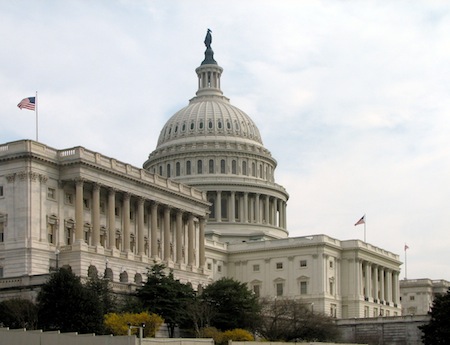House Small Business Committee Has Big Interest in Rural Broadband

Attendance at a June 22 House Small Business Subcommittee on Agriculture, Energy & Trade hearing on improving broadband deployment in rural America was also small, but it was yet another dive into a crowded pool as Washington drilled down on the issue, including on Capitol Hill, at the FCC and even in Iowa, where the President talked up rural broadband as well and promised it would be funded in his trillion-dollar infrastructure package.
The chairman of the subcommittee, Rep. Rod Blum (R-Iowa), is from a rural district and also owns a small technology company that relies on internet access, so he cautioned the audience not to read the light attendance as lack of interest, only that there was a lot going on the Hill (including the unveiling of the Republican healthcare bill).
Related: Read more Rural Broadband Stories
"The nation's small telecom providers are the ones that traditionally supply the bulk of broadband services to the most rural parts of American, and that is no easy task," Blum said.
He noted that acres of land often separate potential rural customers, as opposed to hundreds of thousands per square mile in more urban areas, meaning the bang for the rural buildout buck is much smaller. He said that has led to 39% of rural Americans without access to high-speed broadband, compared to 4% in urban areas.
FCC chair Ajit Pai has pledged to make closing that digital divide a priority.
Blum clearly agrees. He said that while there has been progress over the past few years, "more needs to be done," a phrase that could sum up the bipartisan look at the issue this week.
Blum said he remained hopeful that more progress would be forthcoming with a new Administration and FCC majority.
Multichannel Newsletter
The smarter way to stay on top of the multichannel video marketplace. Sign up below.
The chairman said that as a rural broadband consumer with access to Netflix and Hulu he was concerned he might be bumping up against a capacity issue.
Romano said there was a tension between serving the unserved and insuring a robust experience over the long haul, said Mike Romano, SVP at NTCA - the Rural Broadband Association. He called it a tough choice for policymakers and industry.
He suggested that the most efficient use of resources is to build toward future-proofing a network whose demand will be on an upward growth curve "to handle capacity demands now and in the future." He said those demands go beyond Netflix to things like distance learning and telemedicine.
Blum suggested it was even tougher to design toward capacity for technologies that have not even been invented yet. But Romano said you could still build that network to scale to that increased demand from whatever was driving it.
Contributing editor John Eggerton has been an editor and/or writer on media regulation, legislation and policy for over four decades, including covering the FCC, FTC, Congress, the major media trade associations, and the federal courts. In addition to Multichannel News and Broadcasting + Cable, his work has appeared in Radio World, TV Technology, TV Fax, This Week in Consumer Electronics, Variety and the Encyclopedia Britannica.

